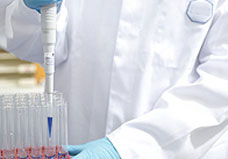| |
 |
|
|
|
|
|
|
Hydrocoele |
|
|
What is a hydrocele?
A hydrocele is a scrotal collection of clear fluid ("hydro" =
water) in a thin walled sack ("cele" = swelling) that also
contains the testicle. Less frequently, due to the common
embryological background of male and female gonadal structures,
female children or women may also experience a hydrocele. In this
case, the sack and connection exist in the labia majora (the
outermost and larger of the two labial structures).
Because of less potential concern for complications in females
with hydroceles, this article will focus predominantly on the male
gender. A hydrocele may involve either one side (unilateral) or
both sides (bilateral) of the scrotum
What causes hydroceles?
Embryology
Between the 28th and 36th week of gestation, the testes,
associated blood vessels and nerves migrate from the upper
posterior abdominal wall adjacent to the kidneys to the lower
abdominal cavity and through a tunnel (inguinal canal) into the
scrotum. As each gonad exits the pelvic region through the
inguinal canal into the scrotum, it is preceded by a thinly lined
"sack" called the process vaginalis. Once the testes and
associated structures have entered the scrotum, the trailing end
of the process vaginalis generally closes off, completely
isolating the contents of the abdominal cavity and obstructing
their passage into the inguinal canal or scrotum.
Should this closure be incomplete and the communication narrow,
free fluid in the abdominal cavity (peritoneal fluid) may seep
into and through the process vaginalis and collect in the scrotum
forming a hydrocele. If the connection is larger and a portion of
the small intestine migrates out of the abdominal cavity into the
inguinal canal and/or scrotum, a hernia has developed
What is
the treatment for hydroceles?
In 95% of congenital (present at birth) hydroceles, the natural
history is one of gradual and complete resolution by one year of
age. For those lasting longer than one year or for those
non-communicating hydroceles that manifest after the first year,
surgical repair is indicated since these rarely resolve
spontaneously
What are other non-tender scrotal
swelling conditions?
The differential diagnosis (list of possibilities) of chronic non
tender scrotal swellings (besides hydroceles) includes:
Hernia:- A hernia involves the introduction of a
segment of the small intestine into the inguinal canal. A sign of
a hernia in the small intestinal region is swelling in the groin
alone, or may also include the scrotum on the same side. Many
complain of an "ache" or "sense of fullness" during this time. If
the small intestine spontaneously slides back into the abdominal
cavity or if a physician reduces it, the patient is generally
referred to a surgeon for closure of the inguinal canal as a
preventative move to preclude a repeat experience.
If the small intestine is trapped and cannot be reduced, this is a
surgical emergency and the patient will be brought to the
operating room in order to avoid intestinal swelling and
subsequent limiting of blood flow to the region, and consequent
possible death of the trapped bowel tissue.
Varicocele:- A varicocele represents engorgement of the
testicular veins and clinically has been likened to a "bag of
worms". While it is a relatively rare finding in the
preadolescent, approximately 20% of late teens and adult men have
been found to have a varicocele. More common on the left side of
the scrotum, the varicocele characteristically "deflates" when the
male reclines, and becomes engorged due to gravity when standing.
In the older teen and adult, varicoceles generally require no
specific management other than observation. In a younger male, if
the varicocele becomes painful, or there is an associated size
decrease in the same sided testicle, evaluation with a doctor
specializing in urology conditions (urologist) should be sought.
|
|
|
|
Hydrocoele - treatment of Hydrocoele,
Hydrocoele types, Disease medicines, Hydrocoele symptoms, Hydrocoele and
Disease symptoms, Hydrocoele symptoms Disease and diagnosis, Symptoms and
Solutions, Signs and Symptoms, type of Hydrocoele, cause common, common
Hydrocoele, Hydrocoele List, causes list, Infectious Hydrocoele, Causes,
Diseases , Types, Prevention, Treatment and Facts, Hydrocoele information,
Hydrocoele: Definition, Hydrocoele names, medical Hydrocoele, medical
Hydrocoele and disorders, cell Hydrocoele, Hydrocoele Worldwide, Hydrocoele
Research, Hydrocoele Control, Hydrocoele Center, Digestive Hydrocoele Week,
Information about Hydrocoele, causes of different Hydrocoele, Hydrocoele
Articles, Hydrocoele and conditions, Health and Hydrocoele, Hydrocoele
Patients, Hydrocoele and Sciences, causes of alzheimer's Hydrocoele,
Hydrocoele causes, alternative medicine heart Hydrocoele, body ailments,
Hydrocoele medicines, medical antiques, type of blood Hydrocoele |
|
|





